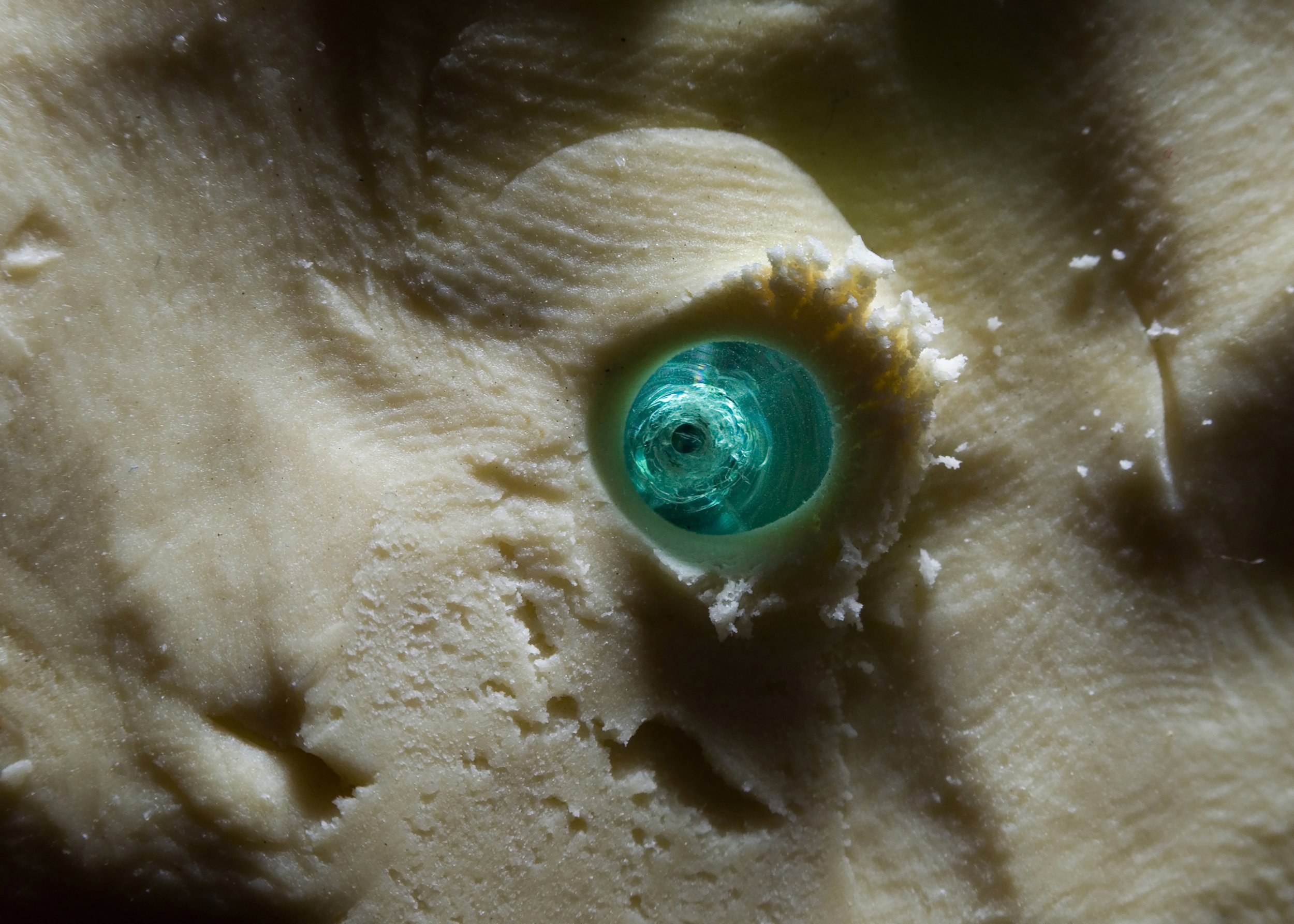
Science and Art in Broken Glass
Hertzian cones in glass
Where art meets science, Hertzian cones are everywhere, yet few people know what they are. Their light refracting beauty can only be seen in macro or photomicrography. (See below.)
Ascention, Braided Tails on Impact Point, photomicrograph, ~750 micrometers.
Black Cone Dark Background, photomacrograph, cone is ~5/8" at the base.
Eagle Rising, photomicrograph, this unretouched section of cone is ~1mm. The light refracts in an interesting unique way.
Time Fracture, photomacrograph, the cone base is ~5.8". The cone has not separated from the overburden (main sheet of 5mm glass.)
The Bodice of Queen Midas, photomicrograph of, a section including a porting of the impact floor. Image width is ~1mm.
Wing Fracture Cone, photomacrograph, base is ~5/8". The cone has not separated from the overburden (main sheet of 5mm glass.
Firebird, photomicrograph, circular feature is the ~1mm. impact site that, before the main sheet of glass was removed, made the floor of the impact crater.
Fire watchers, photomicrograph, the image width is ~500 micrometers of the "mist" section of the cone.
Winged Cat, photomicrograph, circle area ~1.5 mm.
Crystal Range of Five Cones, photomacrograph, image width ~1.25".
Hertzian Fracture in Polarized Light, photomacrograph, cone base ~1/2".
Hertzian Cone on 24 Pound Paper Edge, photomacrotraph, cone base ~1/2".
Bottom of Hertzian cone on a plate glass base, photomacrograph, cone base is ~3/8".
Shattered Cone on Glass, photomacrograph, cone diameter ~1/2".
Cygnus in Hackle Edges, photomicrograph, circular field ~1,5mm,
The Hertzian cone upper layers can be seen in and under a layer of clay on a ~5mm sheet of plate glass. Thumbprints in the clay give perspective to the size of the ~1/4 inch crater. Ejecta and the overturning lip of the crater rim look like eyelashes on a dragon's eye.
This is the underside of the "dragon's eye" clay layer image showing the full Hertzian cone.
Hertzian fractures in glass, rock, and ceramics are studied by multiple disciplines and many fields. Nomenclature for impact features varies field to field, so this study was undertaken to compare features in impact similarities, primarily in glass and rock. However, examples from reports on ceramics, metal, ballistics armor, and dental materials provided insight. Undocumented features heretofore were unnamed, so necessity dictated that they be examined and named in a glossary. An attempt to consolidate terms used in the publication can be found in Hertzian Fractures and Related Terms – A Glossary, by JD Byous.



















